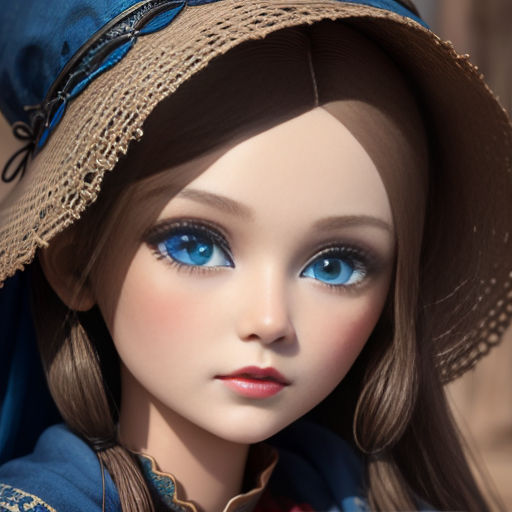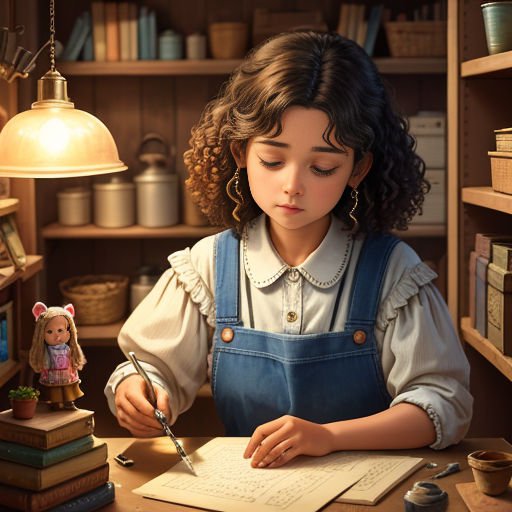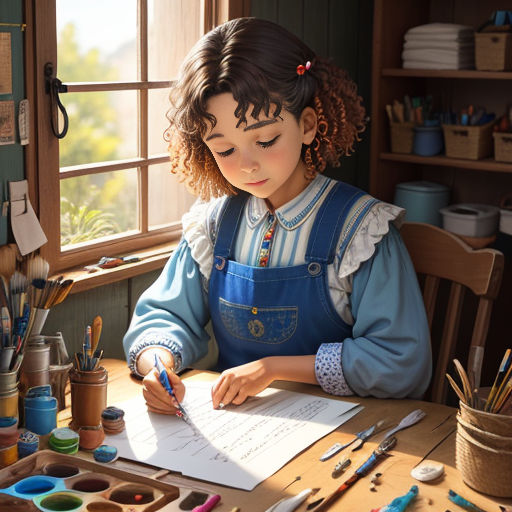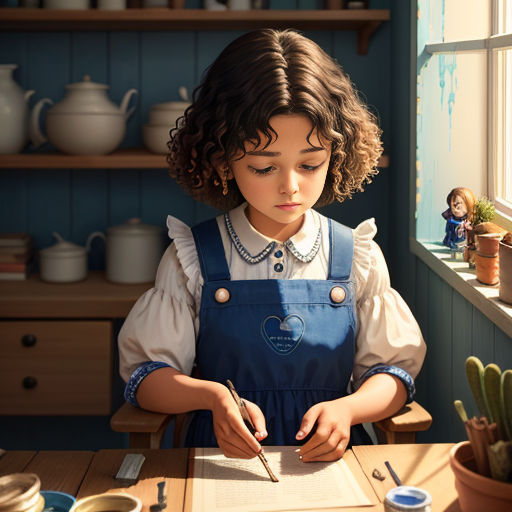
The Dollmaker's Tale
By carmen1975silva

15 Aug, 2023

In a small village lived a masterful dollmaker named Amara. She crafted exquisite dolls that were coveted by children and collectors alike. Yet, she had one question that always puzzled her: What was the origin of dolls?

One day, unable to quench her curiosity, Amara decided to embark on a journey in search of answers. She packed a bag, waved goodbye to her village and stepped into the unknown with excitement.

On her journey, Amara arrived at a bustling harbor city. By the sea, she spotted an elderly sailor weaving a doll from sea kelp. He had wrinkled skin, deep-set eyes and a warm smile.

The sailor shared stories of ancient seafarers who made dolls from kelp as talismans for safe passage. As he spoke, Amara listened and learned, the pieces of her puzzle slowly coming together.

Leaving the harbor, Amara crossed plains and reached a dense forest. She found a tribe, where everyone had a doll made of leaves and tree bark. They called these dolls "Spirits of the Forest".

The tribe explained that these dolls were made to honor the spirits of the forest. They believed these dolls made them one with nature and kept them safe from harm.

Deeply touched by their reverence for nature, Amara moved ahead. Her journey took her to a city of stone, where she met a skilled stonemason carving a delicate stone doll.

The stonemason explained that his ancestors made stone dolls to immortalize the beauty of the human spirit. With every stroke of his chisel, he demonstrated his love for the craft.

Inspired by the stonemason's passion, Amara continued her journey and found herself in an icy tundra. There, she met a woman knitting a doll from wool, her rosy cheeks glowing in the cold.

The woman explained that the woolen dolls were symbols of warmth and family for the tundra inhabitants. They kept their children comforted through the long, harsh winters.

After a long journey, Amara returned to her village. She began crafting dolls integrating the cultures she had encountered, immortalizing their symbols in her work. The dolls, now, had more meaning.

Amara finally understood the origin of dolls. They weren't just toys, but embodiments of emotions, beliefs, and stories passed down generations. Her journey had enriched her craft tremendously.

Amara’s dolls came alive with the tales she weaved into them. Her village rejoiced, for every doll was now a piece of world history, a true testament to the fascinating origins of dolls.